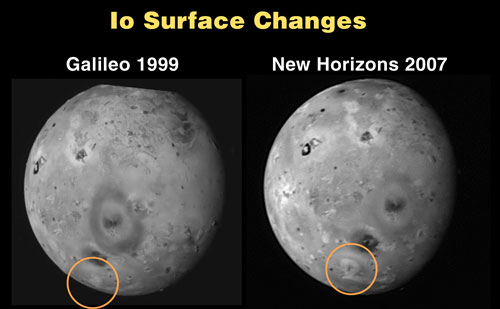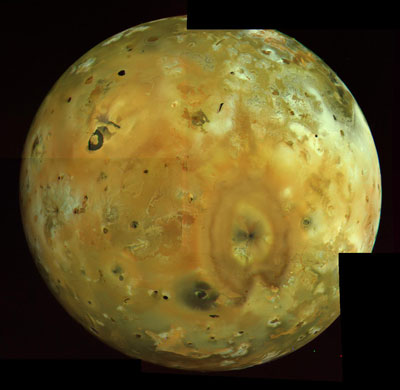Brian, Emily and Phil have all picked their favorite images from the set just released by the New Horizons Team (see the full gallery here), but I have to beg to differ in liking this one best. Two probes – Galileo and New Horizons – two gorgeous snapshots of Io, and an eight year gap between them, allowing us to look for changes on this unusually active moon.

The circled area shows a newly active volcano – on the New Horizons image you can see the addition of a dark spot surrounded by a brighter patch left by fall out from an erupting plume. I think I can see a few other changes too: for example, there’s a couple of darker spots to the top left of the prominent ring around Pele, just before you reach the terminator.
These changes might not seem so impressive until you realise that we’re talking about features tens or hundreds of kilometres across – at such a scale you probably wouldn’t see any geological changes at all on the Earth in 10 years. So you can be sure that if we had higher resolution images we’d see a lot more dynamism.
We actually have some even earlier close-ups of Io to play spot the difference with. Below is a photomosaic from Voyager 1’s flyby in March 1979. Pele is again prominent to the bottom right.

I reckon that I can see a few changes – how about you?
What I’m really waiting for, though, are more shots of Europa to be released, so we can have another look at what’s going on, on its fractured icy crust. Any changes there would be very exciting. For now, though, it looks like we’re stuck with arty:
Of course, when arty looks that good, I’m not complaining.




Nice plan for content warnings on Mastodon and the Fediverse. Now you need a Mastodon/Fediverse button on this blog.